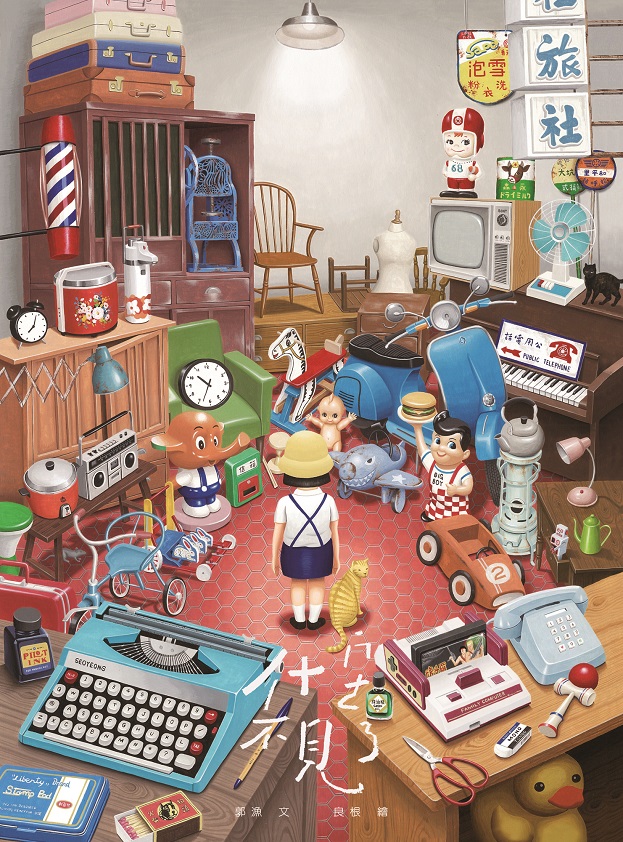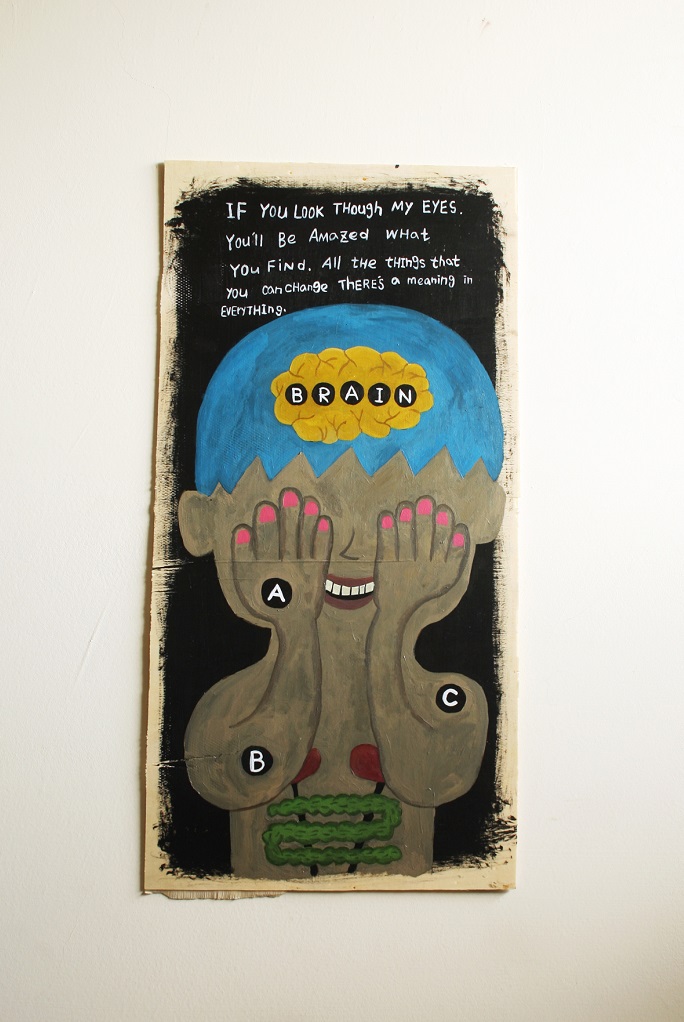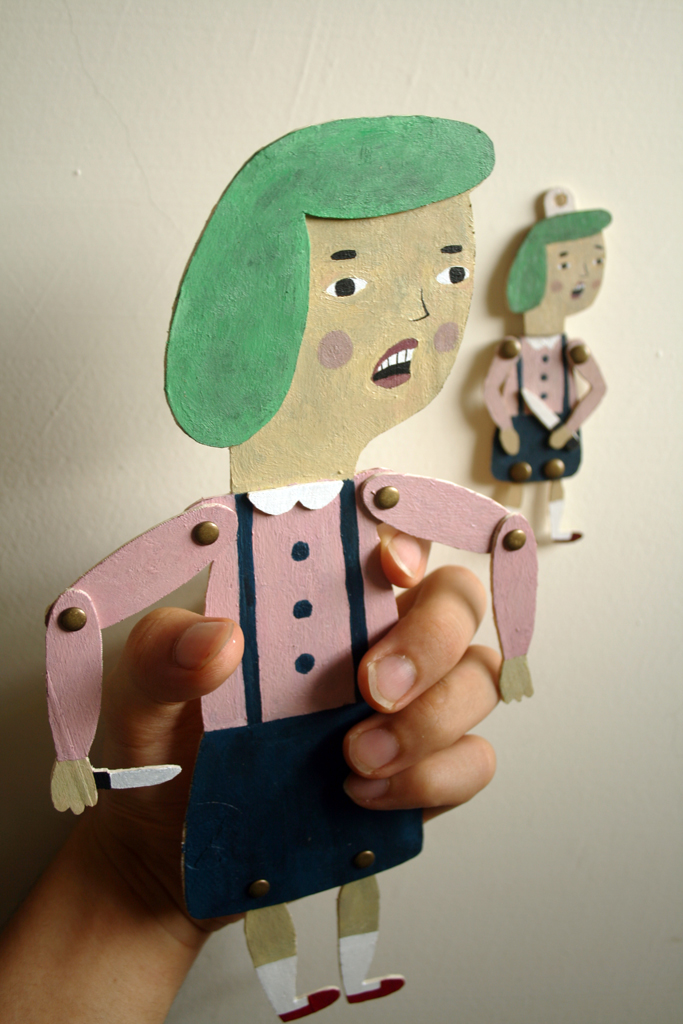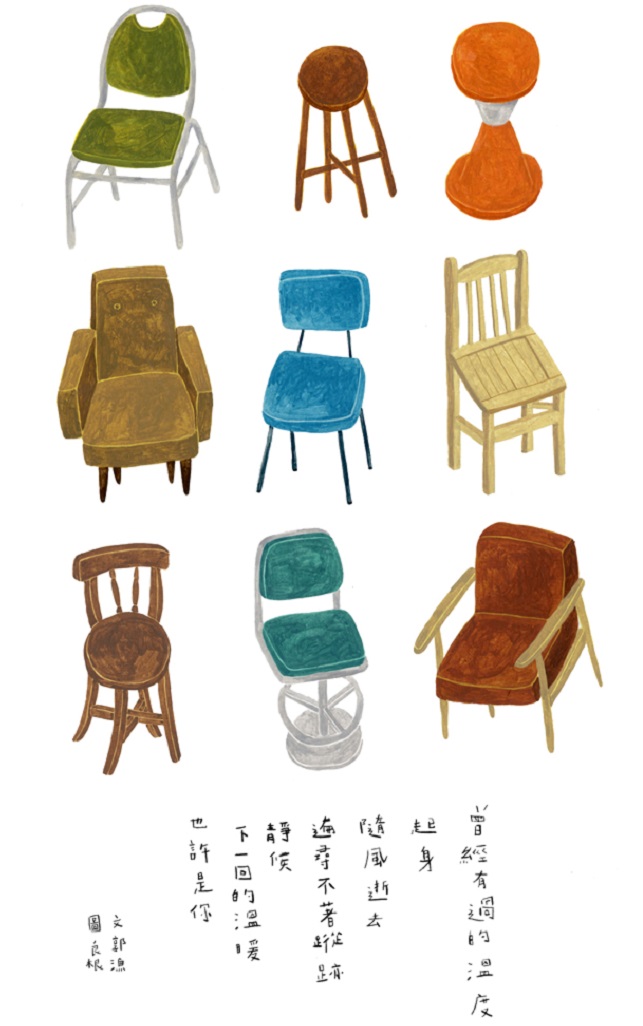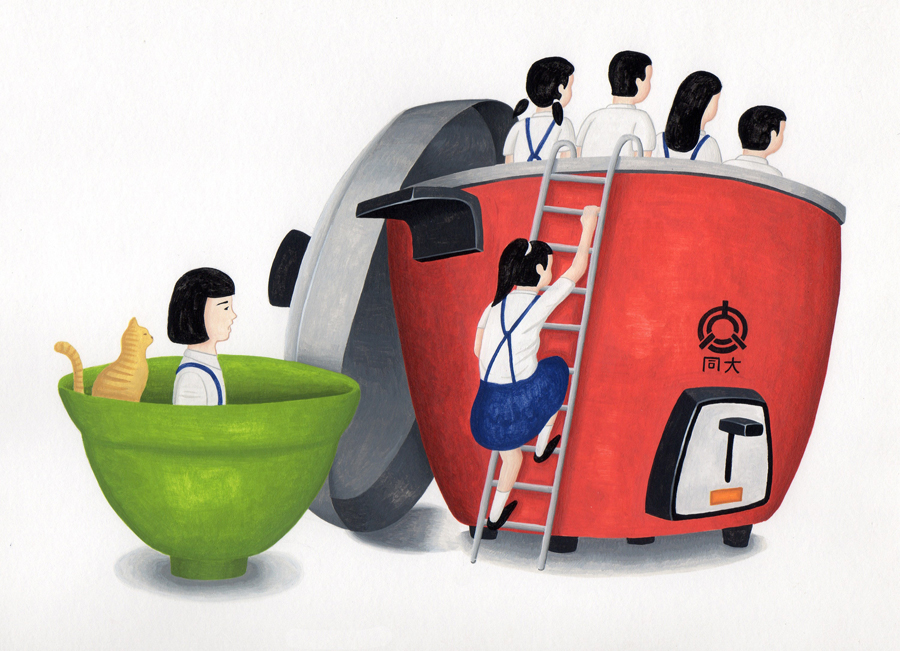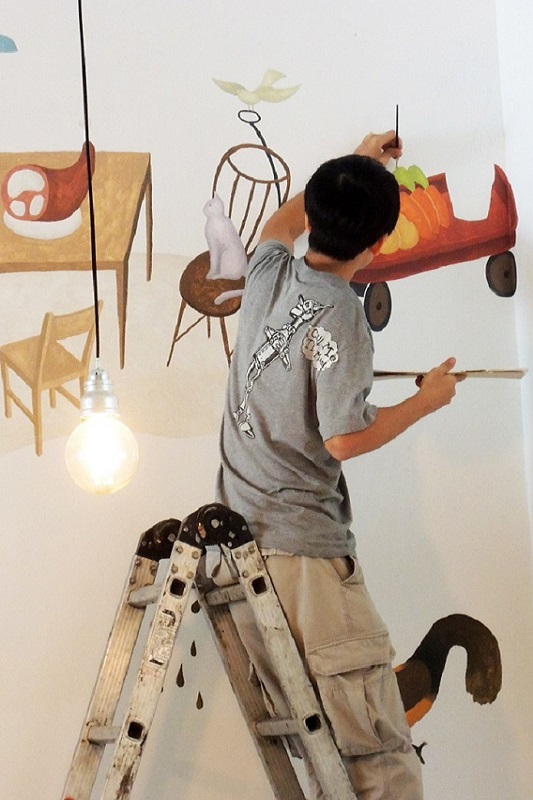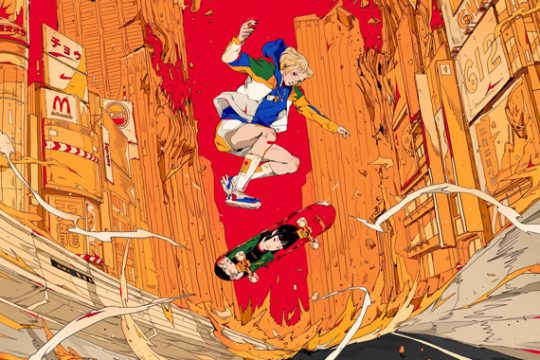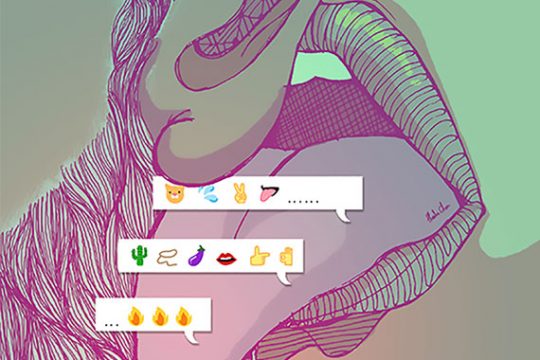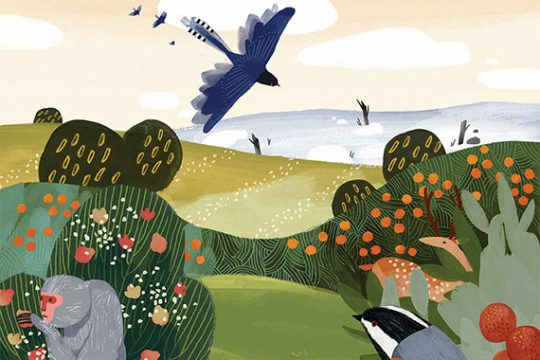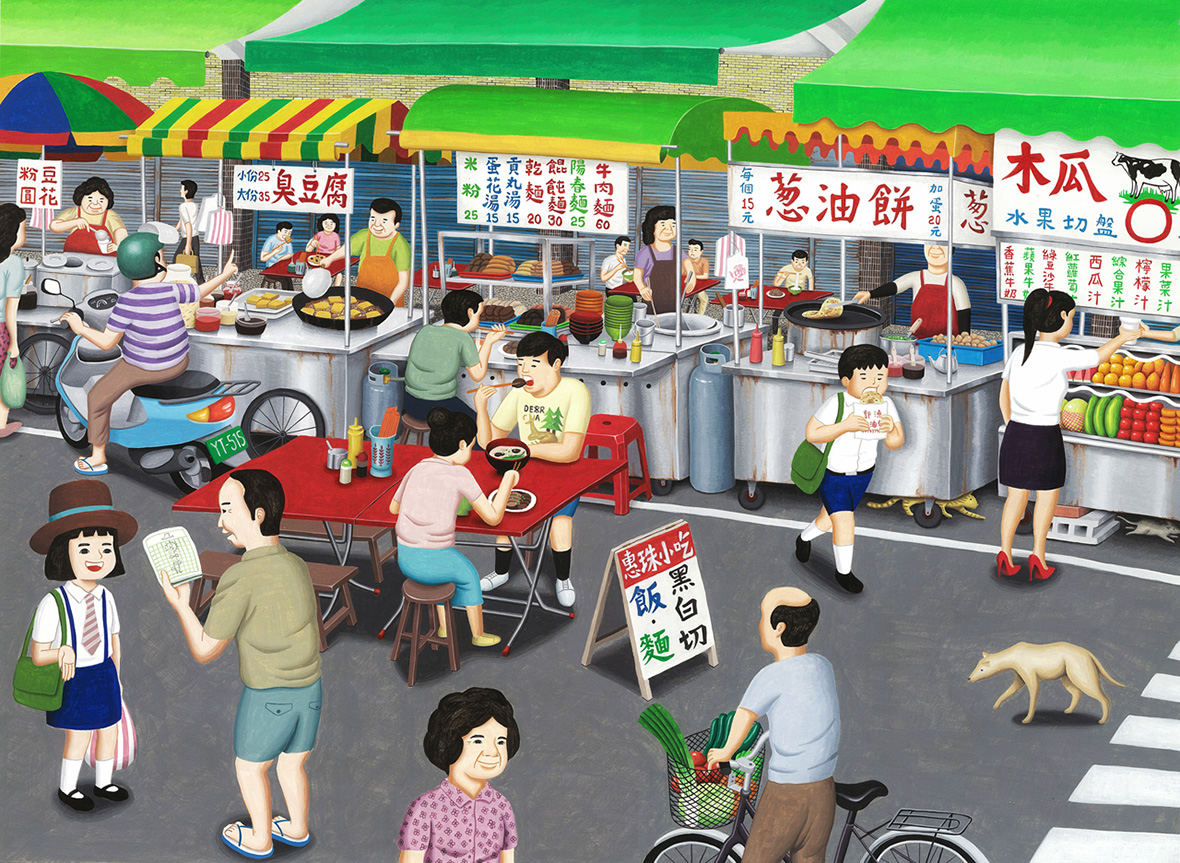
Liang Gen is a Taiwanese illustrator who finds his inspiration in the mundane moments of daily life as well as from traditional Taiwanese customs. His work is often described as being filled with a nostalgia for the memories of the past, as well as having a child-like sense of wonder. Based in Taichung, the 33 year old artist has published four books so far: Fengyanfengyu (2012), Shuying (2013), Renshengzhexue (2014), and the most recent Shenmobujianle.
臺灣插畫師良根的畫作從生活中的小事和臺灣的傳統本土風俗中汲取靈感,充滿對逝去年華的回憶和奇幻的童趣。現居臺中,剛滿33歲的良根已經發行了四本繪本,從2012年的《峰言峰語》、2013年的《曙英》、2014年的《人身折學》,壹直到最近的《什麽不見了》。
“When I was little, my dream was to become a manga artist. Around when I was nine or ten, my brother Guo Yu Yi and I started making comics. He was in charge of writing the story while I would focus on the illustrations. It was just a hobby of ours at the time.”
“小時候的誌願是成為漫畫家。大約九、十歲吧,和我哥郭漁壹起畫漫畫,他負責編劇,我負責畫,完全是出於愛好。”
While Liang Gen was still a student, he produced a series of artwork called The Ugly Family. He put it up in a marketplace dedicated to creatives in an attempt to make some money. This was his first hand-drawn work and it draws influence from the famous Japanese manga artist Osamu Tezuka. After becoming a full-time comic artist, Liang Gen and his brother Guo Yu Yi continued to work together. Liang Gen’s style underwent some drastic changes during this time, his colors were slowly becoming more vibrant and the details even more refined.
早在學生時代,良根畫了壹系列的作品《The Ugly Family 》去參加創意市集並販售壹些商品賺零用錢。這也是他的第壹個手繪作品,頗有日本漫畫家手冢治蟲質樸的意味。真正成為全職漫畫家之後,良根和郭漁壹個畫壹個寫的合作仍在繼續,但良根的畫風大有轉變,色彩更加明麗,線條愈加細膩。
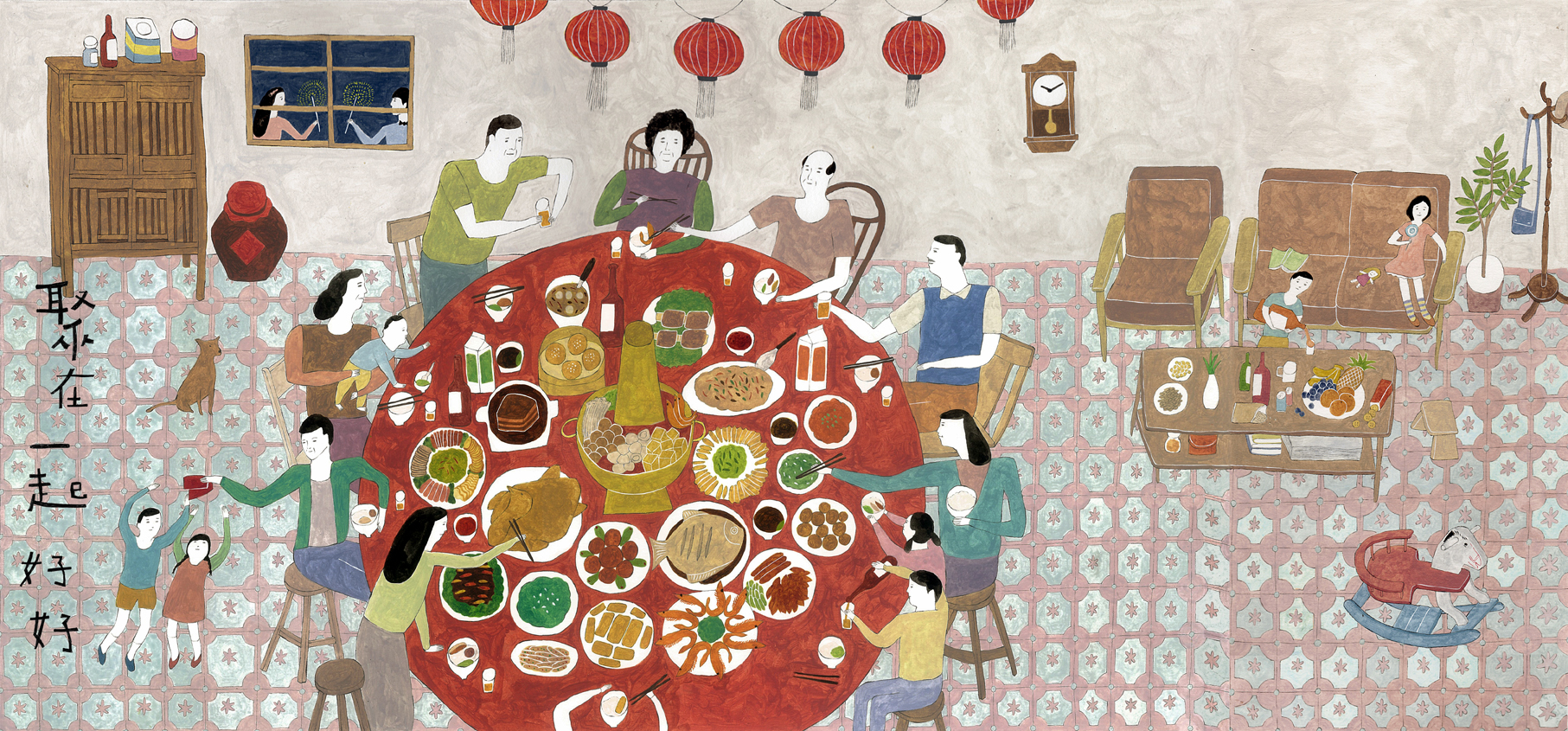
“I’ve never received any formal education when it comes to drawing. I learned woodworking in high school and furniture design when I was in college. When I started working I felt no sense of satisfaction or achievement since the drawings I produced weren’t the kind of work I wanted to be creating. Soon after realizing this, I quit and started freelancing from home. The furniture designs I created at that time were required to be made digitally so in the very beginning all of my work was done digitally. After becoming more and more familiar with illustrating and discovering the fun in drawing, I started taking notice of the art of painting. I thought being able to draw freehand was especially cool, and in trying to impress girls at the time, I started to practice drawing freehand. I like the visceral feel of putting a brush to canvas – you’re able to infuse more personality into the work.”
“ 我沒受過相關的美術訓練。我高中主修家具木工,大學學家具設計。在上班的時候在工作上得不到成就感,又畫不是自己想畫的東西,於是就辭職在家開始接工作創作。因為設計需要用電腦,所以其實我壹開始是用電腦畫圖。後來畫出心得,覺得很好玩,開始註意到插畫的領域。我發現能徒手畫圖特別酷,為了追女朋友,就開始勤練徒手畫圖。我喜歡手繪的自然筆觸,比較有人的味道。”
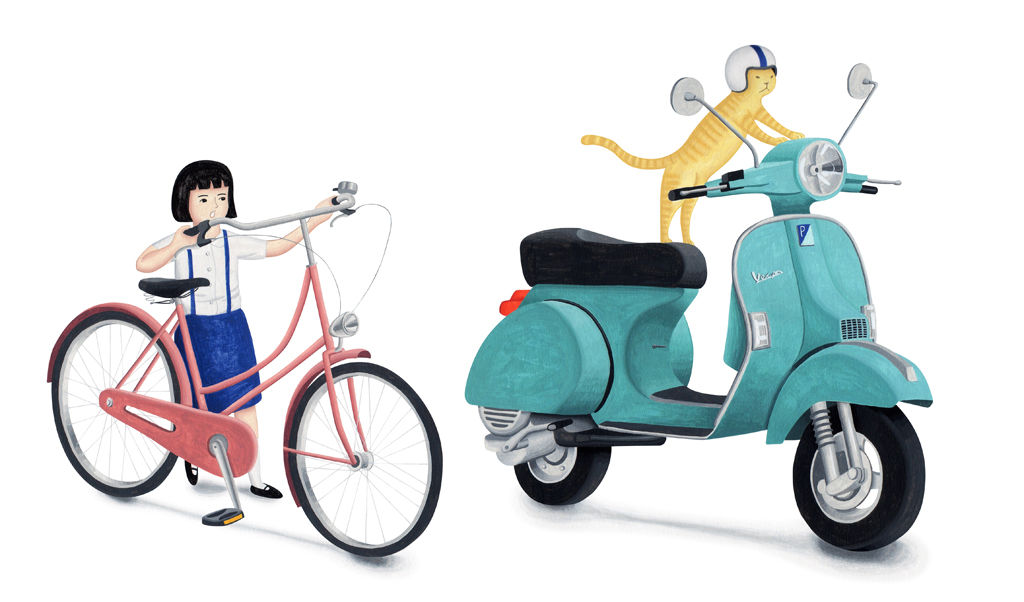
The majority of Liang Gen’s work revolves around memories of his childhood. “When I was still young, every Chinese New Year our family would go to our grandparents’ house located in the more rural area of Taiwan. Honestly, every year around that time is the most fun I have all year. Swimming in the ponds, being in the farm, along with catching fish in ditches and crickets in the garden was the happiest time of my life.” These familiar scenes of his childhood soon disappeared. His grandparent’s traditional Taiwanese house was soon replaced by a high-rise, the farm turned into a factory, and there were no longer any more fish to be caught. “Our future generation will never know of these moments and places that were so much fun to us as kids. So naturally, as I grew older I wanted to draw these memories that I’ve been so fond of as a kid. Seeing as all of these things are gone now I suppose that I subconsciously wanted to try and relive these beautiful memories through my work.” Liang Gen’s newest book Shenmobujianle is a visual narrative on the current state of traditional Taiwan culture that is rapidly disappearing .
良根的作品大多取自童年的回憶。“小時候每逢過年都要回鄉下爺爺家,我每年都在等那個時刻,實在是太好玩太過癮。在池塘遊泳,在農田、水溝裏抓魚和果園裏灌蟋蟀等等,是我壹輩子最快樂的時光。” 然而童年熟悉的場景卻離他而去,三合院變成高樓,農田變成工廠,水溝裏再也沒有魚。“我們的下壹代再也沒有這些好玩的東西了。長大後就自然而然想要畫傳統的東西,應該是因為這些童年的東西都已經消逝,潛意識想要尋回這美好的回憶吧。”良根2015年的新書《什麽不見了》正是暗示了臺灣的這種現象。
Besides illustrating books, Liang Gen also challenges himself by creating wall murals. “Compared to drawing on paper, creating a mural is more of a physically fatiguing task. A big risk is the height of the wall. At around three or four meters, I need a ladder to go up. Every time I climb I’m afraid of falling. It’s a scary thing to be so up high, with one hand holding paint and the other hand drawing. Not to mention the process of going up and down in order to make sure the proportions and the shadows are correct. When I’m finished with the piece, I feel both a sense of accomplishment as well as a sense of disbelief that this is something I created. Afterwards seeing the furnishings come together with my mural and how they compliment one another it makes me even happier.
除了繪本,良根還挑戰在墻面上直接作圖。“相比在紙上畫圖,在墻面上畫圖很費體力。最大的困難是墻面太高,大約三到四米高,需要爬鷹架上去,每次在爬的過程都很怕摔下去。在上面畫更可怕,壹手拿顏料,壹手畫圖,雙腿都會發軟。而且要不斷上上下下,看圖的比例、光影正不正確,很費體力也很危險。最大的成就感就是畫完後,覺得不可思議,不相信這是自己完成的,看到照片上裝潢與插畫互相呼應、相輔相成,更是覺得開心。”
Liang Gen’s knowledge of hand-drawn illustrations was all self taught. He only uses acrylic paints as he confesses that he enjoys the specific smell that it has. The first piece of work he had done with acrylic paint was for a restaurant. In that painting, he captured the excitement and togetherness of gathering around a communal hotpot as a kid during Chinese New Year. The pay for this particular painting was quite underwhelming, despite the fact that he spent a great deal of time creating it. In the end however it paid off as that painting resulted in a lot more commissioned work that later came his way.
良根的手繪全靠自己摸索。他說他只用壓克力顏料,因為喜歡它樸拙的味道。用壓克力顏料創作的第壹幅作品是為壹家餐廳畫的插畫,描繪了小時候過年時圍爐的熱鬧氣氛。這幅畫給的報酬非常的少,但是良根卻花非常多的時間去完成,最後也因為這幅作品得到很多的工作機會。
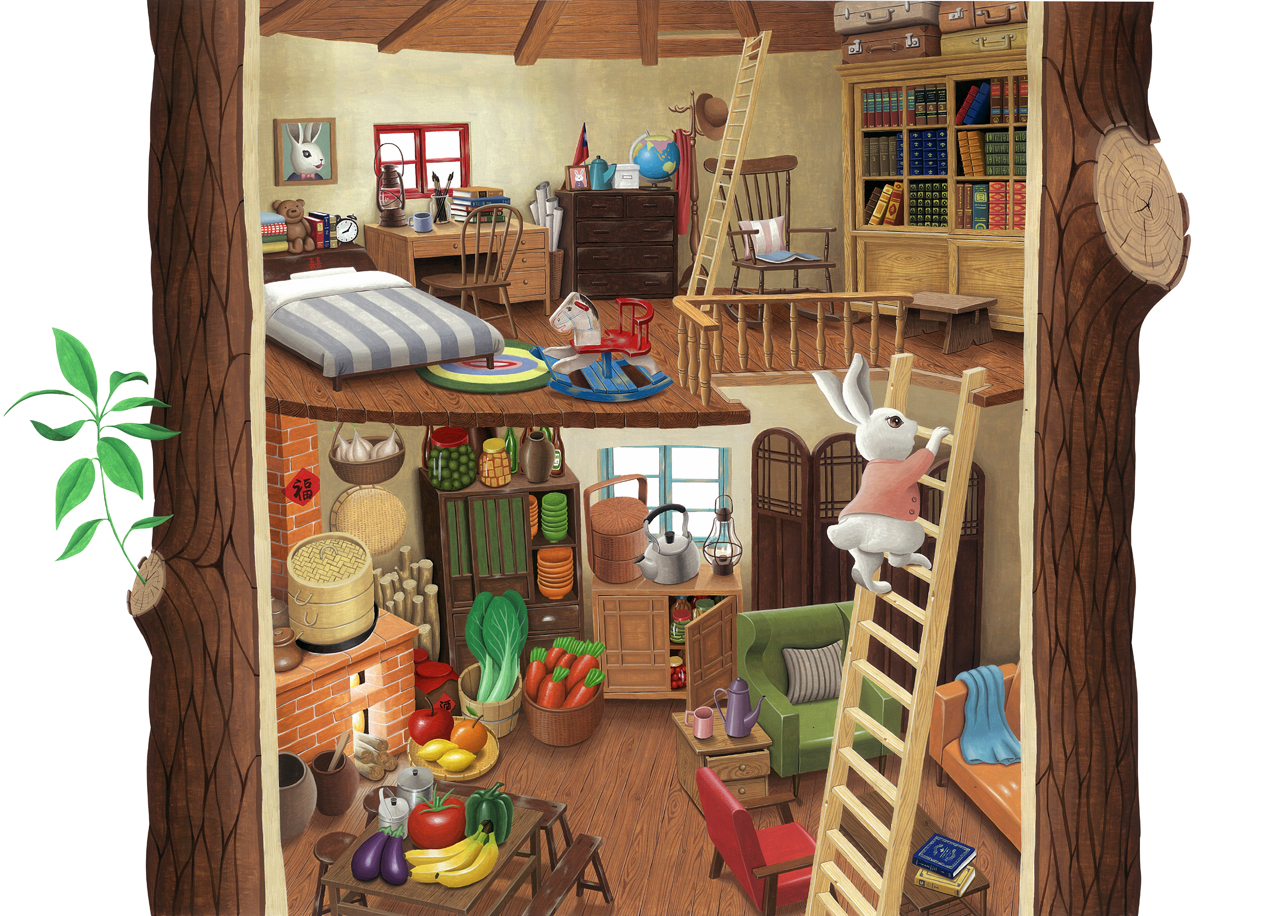
“Most painters find it hard to pursue painting full-time, I know many painters that also work another day job. I’m able to do this full time because of the topics and themes I pursue, which are very relevant to Taiwanese culture and this country is currently lacking painters of this kind. A lot of my work are commissioned pieces right now so I have an endless amount of jobs available but what I want is to have more creative freedom. I will often turn down jobs to make more time for my own personal paintings which in turn has created hardships for me in daily life, but on a mental level the satisfaction I get from creating work I’m proud of keeps me going. Even if I can’t earn a consistent income just from my personal work, at least I am happy. I still do commercial work but at the same time I am also working on my own illustrations. When I’m drawing I completely devote myself to the work and I easily lose track of the time and even forget about how tired I may be at the time. Every morning when I wake up and look at the paintings I’m working on it puts a smile on my face. It fills me with joy.”
“壹般的插畫家很難專職,我知道很多插畫家都兼職其他工作。我可以專職是因為我畫的主題和臺灣文化有關,最近臺灣大量需要這壹類的插畫家。大部分是商業插畫,所以我有接不完的工作。但是我更想要的是創作繪本,我常常推掉工作來創作自己想要的繪本,把自己生活搞得很苦。但是創作在精神上的滿足感讓我繼續堅持下去。雖然靠它不壹定能賺到足夠維持日常生活的錢,但是卻讓我很開心,所以我可以壹直堅持下去,因此我會壹邊接案壹邊創作。在創作時,我總是可以全心投入,忘掉時間和疲累,每天早上看到自己還在進行的作品時都會笑,真的很快樂。”


